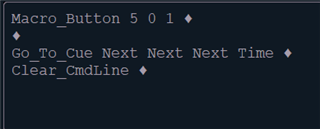I'm running a show in a few weeks on an ion (v 2.9) where every once and a while a poll is opened and the audience votes on what the characters should do next, kind of like a choose your own adventure book. Of course, that means that we can't just record a cue list and press go. Has anyone had to run something like this before?
Over the past week I have been prototyping a control system which uses macros to enable and disable subs bound to macros that fire go to cue commands, but macros don't appear to be super reliable (or maybe I'm just using them wrong). Surely there is a better way to do what I want to do?
Any advice appreciated!
Cheers!
Ben





